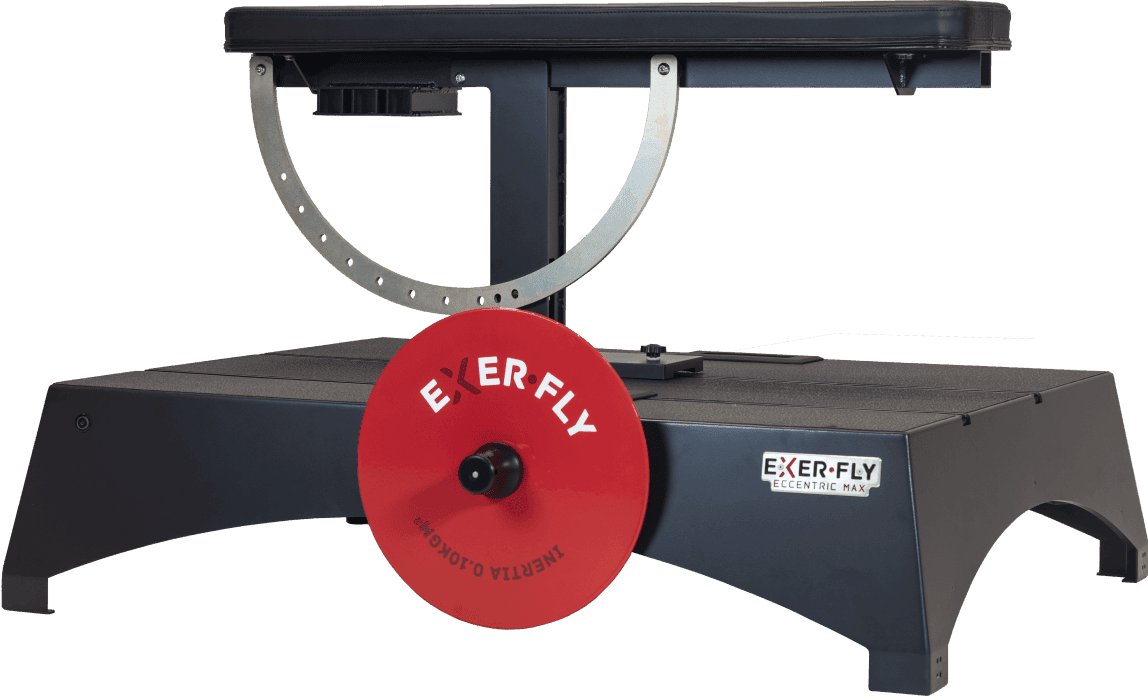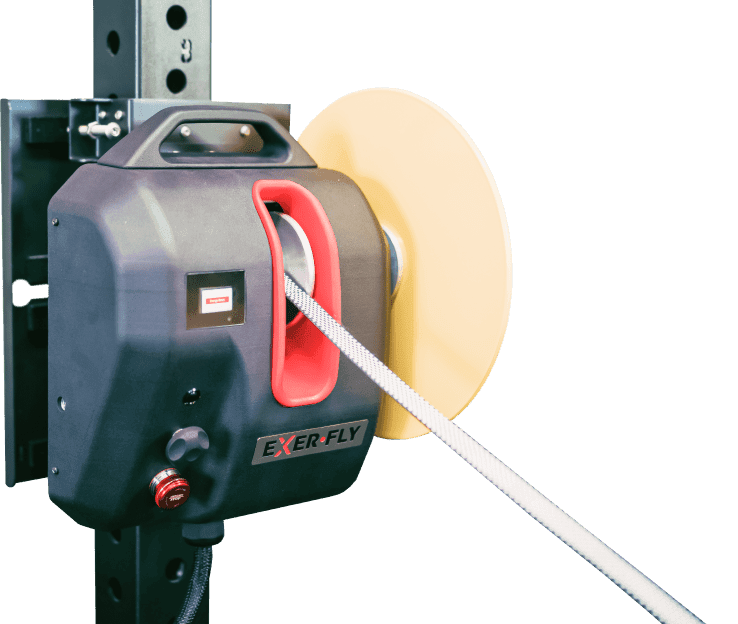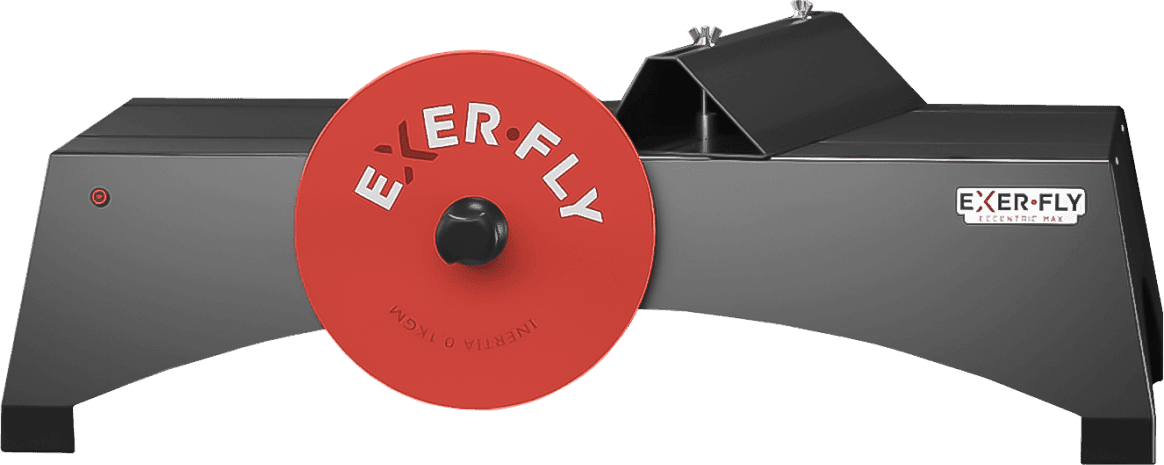
Eccentric Bench Press: Maximize Strength & Size
You may be pretty familiar with eccentric training and its benefits widely discussed within the fitness community. But can it be incorporated into classic movements such as a bench press, and what are its benefits?
An eccentric bench press is a free weights exercise that focuses on the movement's eccentric (lowering) phase, primarily targeting the chest, shoulders, and triceps.
Yielding better and more efficient results than a traditional bench press, we will cover the ins and outs of the eccentric bench press and why you should incorporate them into your routine.
What Is An Eccentric Bench Press?
The eccentric phase is characterized by the muscle lengthening while it contracts. During a bench press, this is the downward motion. On the other hand, the concentric phase is when the muscle shortens while it contracts, which is the upward motion of a bench press.
Eccentric bench presses use more weight during the eccentric portion of the lift than in the concentric, meaning it's heavier when lowering the bar during the bench press.
- An accentuated eccentric bench press increases the load on the chest and triceps. There is a further stress on the body because the load lowered is heavier than the load lifted, stimulating eccentric specific adaptations. Accentuated eccentrics have led to superior results in hypertrophy, power, and strength over traditional strength training.
- A slow tempo eccentric bench press has a slow eccentric and quick concentric motion. However, slow tempo eccentrics do not overload the eccentric phase as loads are below concentric 1RM. It is often used as a teaching tool or a method to increase time under tension.
Eccentric Bench Press Benefits
Low Metabolic Cost
Studies have found that eccentric exercises increase muscle strength with little demand for oxygen. As the oxygen consumption required to do eccentric work was equal to or less than that needed to do concentric work. Increasing the eccentric work rate for bench presses means you can make significant strength gains without muscle injury and a minimal increase in metabolic demand for oxygen.
Increase Flexibility By Increasing Muscle Length
Research uncovered that you can shift the optimum length-tension relationship in muscle to longer muscle lengths after eccentric exercise. This is significant as greater structural stability at longer muscle lengths can positively impact injury prevention and athletic performance. You can achieve this with eccentric bench presses.
Produce more force
Studies on trained rugby players revealed that slow and fast tempo resistance training incorporating accentuated eccentric loading improved back squat 1RM and sprint speed compared to traditional resistance training.
Short-term incorporation of slow accentuated eccentric bench press loading can bring on higher yields in improving strength compared to traditional resistance training.
Maintain Type IIX Muscle Fibers
A meta-analysis found that eccentric training elicits more significant improvements in muscle strength, superior enhancements in power and strength-shortening cycle (SSC) function, and a preferential increase in the size of type II muscle fibers.
Type IIx muscle fibers require significant power and strength and are used for activities of short duration that need explosiveness. These are important for explosive activities like sprinting and jumping.
Jump Higher and Sprint Faster
Studies on the effects of eccentric training have uncovered its potential as a stimulus for enhancements in muscle function and muscle-tendon unit morphological and architectural adaptations. Compared to traditional bench presses, an eccentric bench press will stimulate structural changes in the tendon, improving athletic performance.
Eccentric vs. Concentric Bench Press: What’s The Difference?
An eccentric bench press emphasizes the lowering phase of the lift by slowing the descending tempo or increasing the load greater than concentric 1RM. Concentric bench presses are traditional bench presses with loads less than concentric 1RM or performed off safety pins in the power rack to be concentric only.
A study comparing concentric and eccentric bench press repetitions until failure found that training emphasizing eccentric contractions yielded greater strength and hypertrophic gains than in programs where eccentric actions were not emphasized.
Training programs targeting eccentric muscle actions were seen to have greater training potential for strength increases and hypertrophic gains, further proving that muscles acting eccentrically produce more significant force than those acting concentrically.
How To Perform The Tempo Eccentric Bench Press
With tempo training, a sequence of four numbers pops up in a program. Tempo numbers are always written in this order: eccentric portion, pause, concentric portion, pause. Make sure you understand what position the movement begins to complete the exercise with the correct tempo.
- The first number represents the descending movement, the eccentric portion of the exercise. In a bench press, this is when the bar is lowered.
- The second number represents how long the pause will be at the bottom. This is how long the bar should stay paused on the chest in a bench press.
- The third number represents the ascending movement, the concentric portion of the exercise. In a bench press, this is when the bar is being lifted. Sometimes there might be an ‘X’ as the third number, which means do this movement as fast as possible, or A, which means use assistance.
- The fourth number is the pause at the top. It represents how long the pause will be at the top.
A typical bench press eccentric slow tempo is 3-0-1-0:
- 3 seconds to lower the bar towards the chest
- 1 second to lift the bar back up
- There are no rests between repetitions of the exercise since the midpoint and pause on top numbers are at 0.
How To Perform An Accentuated Eccentric Bench Press
The accentuated eccentric bench press focuses on using more weight than you can lift during the concentric portion of an exercise. At the same time, your spotters work hard through the concentric phase, or the load used is lighter than your 1RM when you have no spotters.
- Perform only one rep with 105-130% of your one-rep max load. Load the barbell with 70-80% 1RM and the rest of the weight with weight releasers.
- Take 3-6 seconds to perform the eccentric phase.
- At the bottom, the weight releasers will come off the bar, and you will be left with the barbell weight. You can have spotters help you during the concentric phase to make it purely eccentric.
You will need to perform several sets because you only perform one rep per set. Start with 3 sets and progress up to 10 sets. Longer recovery is recommended because this technique places a significant demand on your nervous system. You should only include this technique once a week until you're well accommodated.
How To Perform A Flywheel Eccentric Bench Press
There are two methods to overload the eccentric phase during the flywheel bench press.
With The Eccentric Motor
Using Exerfly’s eccentric motor is by far the most effective way to overload the eccentric phase. You don’t even need a spotter. Flywheel training only gives back eccentrically the effort you produce concentrically.
So, to overload the eccentric, you must increase the inertia during the eccentric phase greater than the concentric. The eccentric motor pulls 10-80% more than the effort produced during the concentric. Here's how to do it:
- Connect the Exerfly Platform flywheel training machine to the mobile app.
- For your first time, use a 10% overload. Click “Start Windup” to hear the beeps. These will get faster as it counts down.
- Start at the top of the bench press and let the motor pull you down to the chest.
- Push the bar to the top maximally and feel the eccentric motor boost the eccentric.
Without Eccentric Motor
The versatility of the Exerfly flywheel training means you can still overload the eccentric phase without the motor. It takes a little more creativity. One method is called delayed breaking action. Here’s how to do it:
- Perform 2 warm-up reps of the flywheel bench press to get maximum speed.
- Once on your third rep, instead of resisting the entire eccentric phase, ride it down without resistance halfway, then rapidly try to reverse the action in the bottom half of the movement.
- This concentrates the eccentric force to the exercise's bottom half, overloading the eccentric.
Summary
If you want to increase mobility and stimulate muscle fiber growth, eccentric bench presses are your answer. Being a powerful tool that coaches use, athletes, bodybuilders, and even home users worldwide, eccentric exercises are essential to quickly achieve any fitness goals you have and boost your progress throughout your fitness journey.






